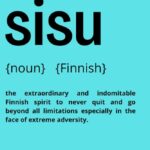As a speech coach, I talk to my clients about the value of incorporating stories and real life examples into their presentations. I encourage them to use the 3N method for collecting those stories: NOTICE, NOTE and NARRATE.
NOTICE – Keep your eyes and ears open for stories and everyday experiences that spark your interest and teach you something.
NOTE – write them down in a journal – capture them somewhere so that you can develop and fine-tune them. Look for how the story might be applied to the world of work. Is there a business lesson imbedded in the story. Can it help you illustrate a point you are trying to make?
NARRATE – Tell the stories, practice delivering them out loud and see how you can continue to hone.
Here is a practice opportunity:
On Saturday, February 19, 2011 NASCAR newcomer Trevor Bayne won the 53rd Daytona 500 in double overtime. I am not a racing fan nor do I follow it but when I heard this story I wanted to know more. Here are some self-selected highlights:
- Trevor just turned 20
- Trevor has only been able to drive legally for 4 years
- Trevor became the race’s youngest winner
- This was only Trevor’s second NASCAR Sprint Cup Series race
- The race experienced a 14 car crash (that included the race’s most experienced drivers) and a record number of lead changes and caution periods
- Team Owner – Wood Brother’s first win since 1979
- Preparing for the race he asked himself, “What do I need to do to not let the mountains get too high, and just stay focused?”
- Trevor donated part of of his winnings to an orphanage in Mexico.
- On this race day NASCAR marked the 10th anniversary of the death of its fallen hero, Dale Earnhardt, and it appears that a totally unexpected new hero emerged.
- Bayne has exhibited great humility and gratitude and has conducted himself in a down-to-earth manner.
- Bayne said. “One thing I haven’t really talked about is keeping our expectations realistic here.We won this race and that sets the bar high, but if we would have finished 15th we would have been happy.”
These are a few elements I jotted down after googling Bayne and the race story. The next step in the process is to begin pondering what the real-world lessons might be unearthed through this story.
To discover them, consider asking questions like:
- Was inexperience an asset?
- How can experience get in the way of success?
- What discoveries where made by the drivers – were there lessons learned?
- What can be learned from the way this unexpected hero conducted himself before and after the win?
- Despite a lack of wins, what does this story say about the tenacity of the team owners who pursued yet another opportunity to race with a beginner?
There are likely many elements of the story that can be mined and more points that can be made. Practice incorporating story into your business presentation with this news story – see what you can develop. Create an opportunity in the next 48 hours to use it.
NOTICE, NOTE and NARRATE – This process will help make your presentations memorable.
LAS VEGAS — It was one of those storybook, happily-ever-after endings, seen often in romantic comedies and dime-store novels. Trevor Bayne – a household name perhaps only in his hometown of Knoxville, Tenn. – led the last two laps to win the 2011 Daytona 500 the day after celebrating his 20th birthday to become the youngest victor of what’s often referred to as The Great American Race. Not only is he the race’s youngest victor, he also is the only driver to win in his first try. He gave the legendary Wood Brothers racing team – NASCAR’s oldest team – its first Daytona 500 victory since 1976. Throw in the fact that the car was painted to resemble David Pearson’s ’76 500 winner (which also won involved in one of those Hollywood-style finishes) and it has all the makings of a tinseltown blockbuster.







